Do-it-yourself sliding door installation
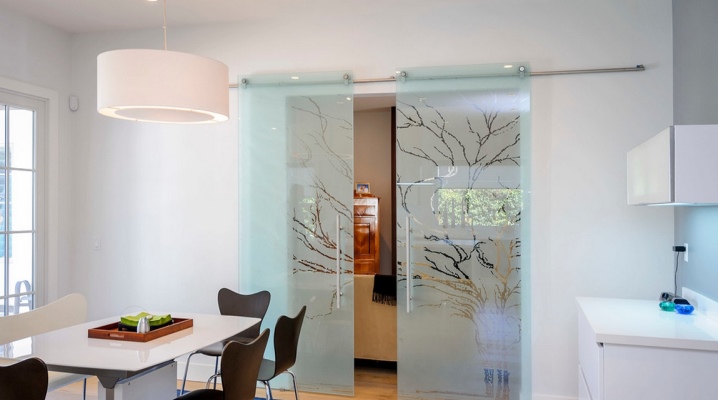
To isolate one space from another, doors were invented. The variety of designs on the market today can satisfy the needs of any, even the most demanding customer. But there are designs that have not given up their leading positions for a long time. These include compartment doors. You can install such doors with your own hands, the main thing is to study their features, types and methods of installation.
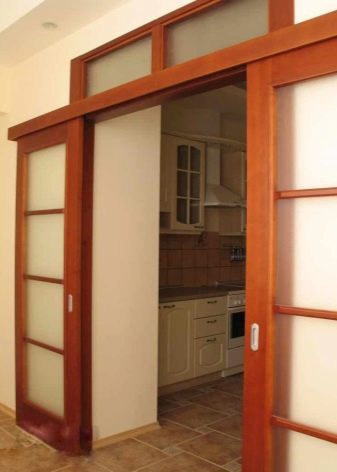
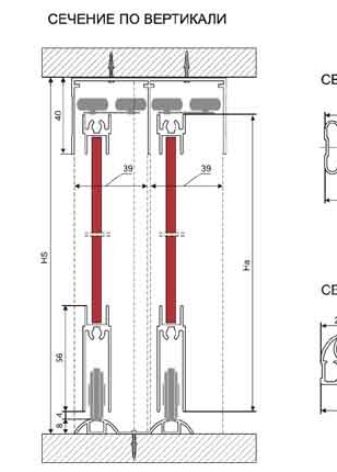
Peculiarities
Sliding doors are sliding structures that have their own characteristics that must be studied before proceeding with the installation of doors with your own hands.
Sliding doors have a simple design, consisting of a door leaf, a roller mechanism and guides. The door leaf moves with the help of rollers along the profile, in which stoppers are installed on each side, limiting the movement of the doors to the set points.
Without a doubt, this design is in great demand, as it has advantages over swing doors.
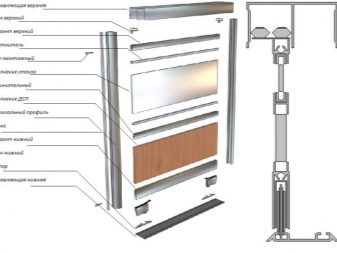

Due to the peculiarities of the fastening, the door leaf always moves parallel to the wall, and some models roll back into the built niche, so there is no dead zone in the corner. Any room with installed compartment doors is visually perceived more spacious than with swing structures.
The compartment door will not just open from a sudden rush of draft and it is impossible for it to accidentally pinch a finger, which is important for families with young children.
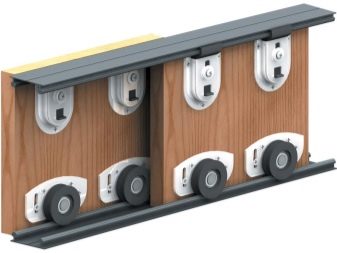

The design of door leaves is very diverse. You can buy a ready-made canvas, or you can make it yourself. A homemade design will look no worse than the purchased copy. And the installation of compartment doors is not difficult. If desired, even a non-professional can handle it with the necessary tools and correctly made measurements.



Views
There is a classification of compartment doors, thanks to which they are divided into different types. The classification depends on the place and method of installation, design and number of door leaves.
Sliding doors are used in different places. They are installed in doorways in the kitchen, room, toilet or bathroom. With their help, they enclose the space, separating one area from another.
Sliding doors are mounted in niches using this storage space.
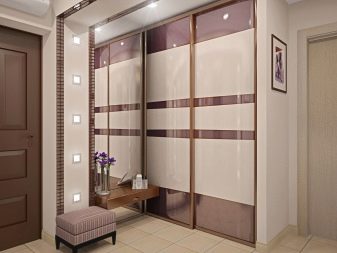

Most often, sliding doors at home are installed between two rooms. They can move both along the wall and have an open structure, or they can be built into a niche, and when opened, they completely hide inside it. The hidden design requires the installation of a frame and other significant repairs that are carried out before the door is installed.
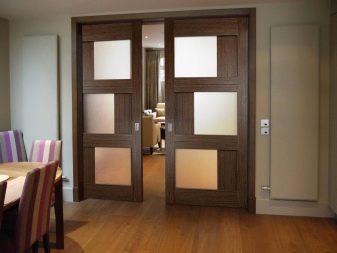
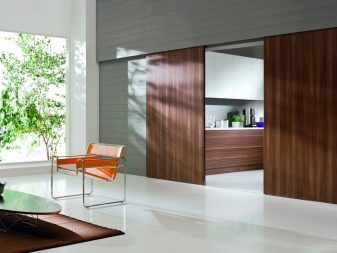
The compartment door is also used in wardrobes. Furniture designs have their own specifics. As a rule, such a door moves along two guides and has two pairs of rollers. Some are located at the bottom of the door leaf, and others at the top. Interior compartment doors, unlike furniture options, most often have one guide - the upper one. In this design, it performs two functions: holding the door leaf and ensuring movement.
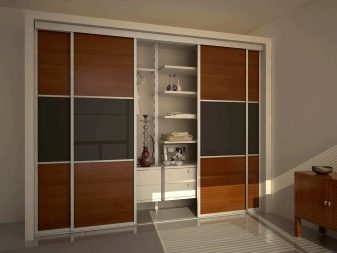
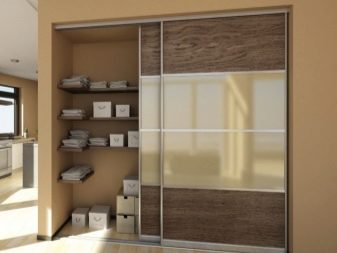
Any design can be installed in the dressing room. It all depends on the area of the enclosed space and the wishes of the owners.The surface of the door leaf in the dressing room is usually mirrored.
Very often, a dressing room or wardrobe may have an irregular shape. Then doors are installed that have a non-standard radius shape. Smooth corners and a kind of curvature of the canvas are characteristic of radius doors. Fixation and movement of unusual doors is carried out along two guides, which have the same curved shape and are installed both at the top and at the bottom.

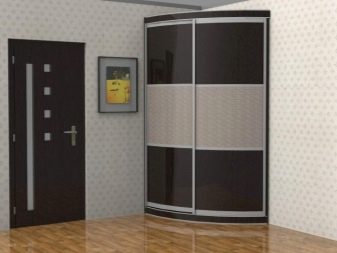
Materials (edit)
To make compartment doors with your own hands, you need to purchase the appropriate materials and choose the design of the door leaf, which can be solid (panel) or paneled, consisting of different materials and supported by a frame.
For the manufacture of canvas, you can use solid wood. The choice of breed depends on your preference. Pine is most often used, and the surface is covered with veneer from more valuable species. Both a solid canvas and panels of the most diverse shapes are made from the array. You can also use wood as a frame.
Working with solid wood requires not only accuracy and precision, but also quite a lot of experience.

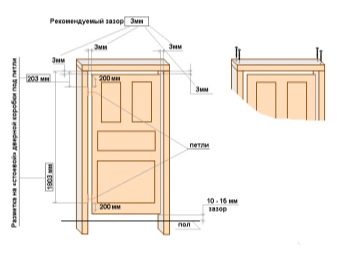
A good alternative to solid wood is plywood, which has a lot of advantages. Unlike solid wood, it is much easier to work with. It bends, and therefore it will not be difficult to give it the desired shape. Plywood doors are resistant to temperature extremes, sunlight, moisture, synthetic detergents. Practical and durable plywood is often used for the manufacture of door panels, not only because of its positive qualities, but also because of its reasonable price.
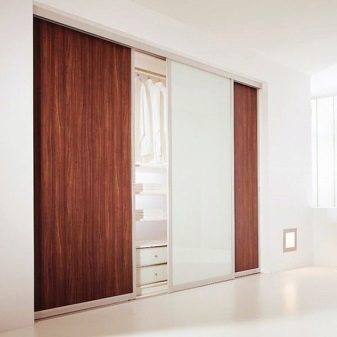
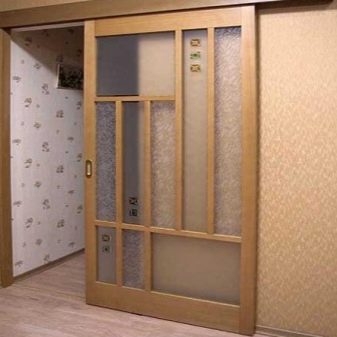
Slightly lower in cost chipboard slabs, which are also used for the manufacture of door panels. The surface of this material can be covered with foil or veneer. When working with chipboard, it must be remembered that the edge must always be closed, regardless of whether a solid sheet will be used to make a door or panel or not. The downside of this material is the presence of harmful resins that are released into the surrounding space when exposed to certain factors.
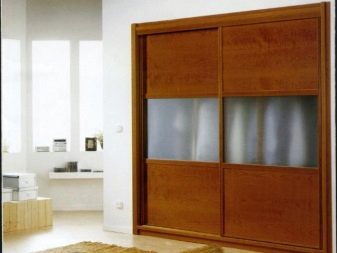
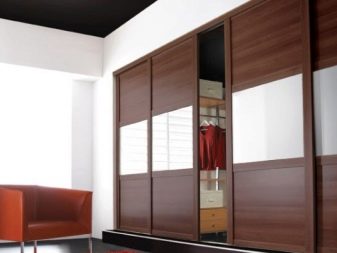
Glass is also used as a material for the manufacture of door panels. It can be used both as a single piece and as inserts in combination with panels made of other materials. The surface of glass canvases can be decorated with sandblasting, photo printing or engraving.
Instead of glass, lightweight and durable polycarbonate can be used for the manufacture of the door leaf. Doors made of it are flexible, and therefore they are often the basis of radius designs. This material is fire resistant and has a fairly long service life.
A mirror is also used as a door leaf, installed both as a separate leaf and in combination with other materials.
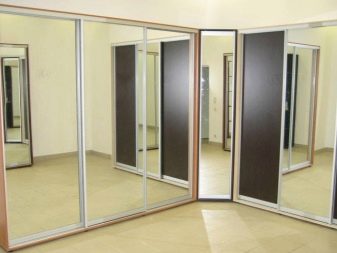
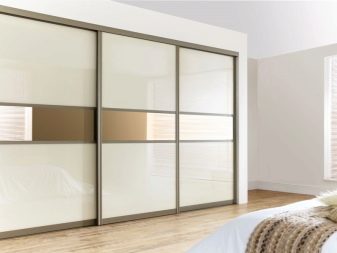
How to calculate dimensions?
Correct installation requires thorough preparation, which includes competent measurement of the opening. The dimensions of the canvas, the installation method and the number of canvases will depend on the results obtained.
Measurement must be started from the height of the opening... Measurements are taken at several points with a step of about 70 cm. As a rule, measurements are taken in the center of the opening, as well as on the left and right sides. The difference in height should be no more than 15 mm. The minimum value is taken as the basic value.

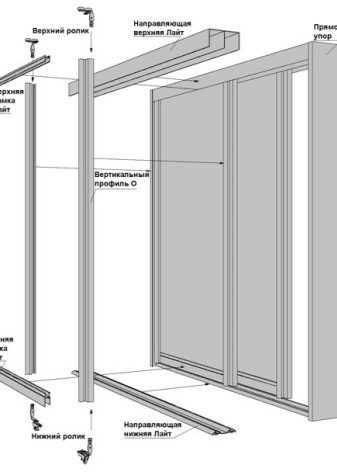
Width is also measured at several points.... Here, the main value is the maximum value. The difference should be no more than 20 mm. Similarly, you need to measure the depth of the opening. This value is necessary when making the opening with a box.
If the width of the doorway does not exceed 110 cm, then, as a rule, one door leaf is required, but if it is larger, then two leaves will have to be installed. The optimal width of the door leaf is between 55-90 cm.Its dimensions should exceed the size of the opening by 50-70 mm.
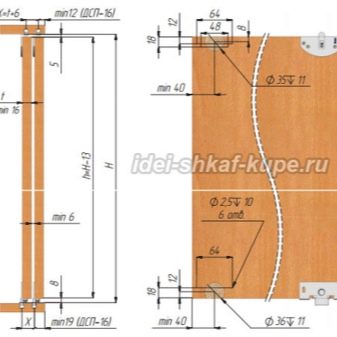

In addition to measuring the height, width and depth of the opening, you need to determine the distance from the opening to the corners (with an open installation method). This measurement is necessary in order to understand whether there will be enough space when moving the door leaf.
The height of the door leaf depends not only on the height of the opening, but also on the installation method of the mechanism. It can be attached to a bar or a special profile. A profile or timber with a compartment mechanism is attached directly above the opening or to the ceiling surface. The height of the door leaf also depends on the location of the lower guide and the presence or absence of rollers in the lower part of the door leaf.
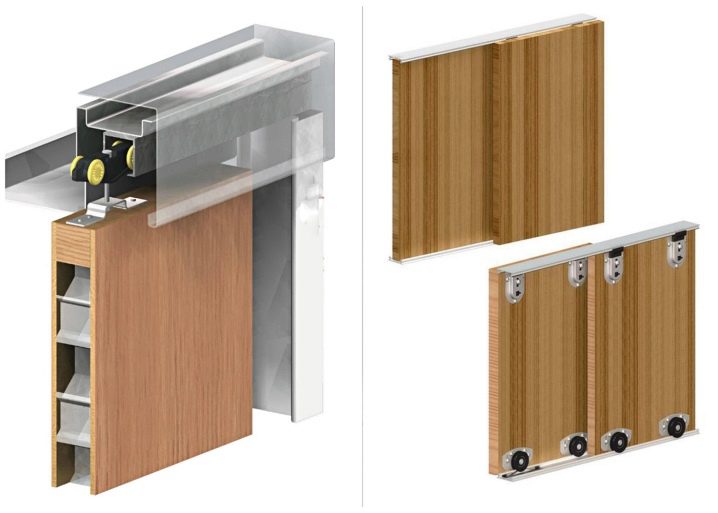
How to do it at home?
In order to make a door structure with your own hands, you must first decide on the material of the door and its design.
If glass or plastic is planned as a canvas, then it is better to order a ready-made sash, since it will be rather difficult to prepare these materials on your own. Handles and profile frames must be purchased according to the size of the door leaf. Both materials are best suited for bathroom installations.
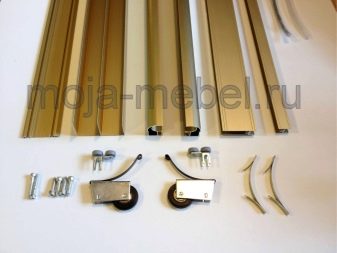
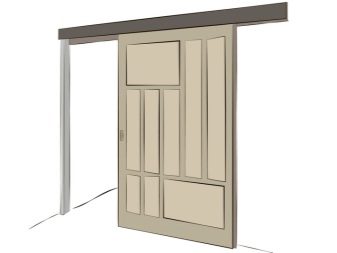
The easiest way is to make your own door leaf from untreated MDF board or natural wood. To do this, you will need a number of tools: a miter saw, a drill, a router (for grooves). You will also need to purchase additional materials: varnish, trimming tape, PVC film or veneer to cover the surface, sandpaper in the absence of a sander. If desired, you can order a ready-made canvas of the required size.


First, the canvas is cut to the desired size, and then the ends are sanded. After that, you can cut a hole for the handle, after making a mark on the canvas. If you plan to install a suspension system, then a groove must be made in the lower part of the canvas, and marks for the roller mechanism and holes must be drilled in the upper part.
Now you need to clean the door leaf from dust. If the work is carried out with wood, then the surface is first treated with an impregnation against decay, and only then it is varnished. If there is a MDF canvas in processing, then a film or veneer is applied to its surface, which, if desired, can be varnished.
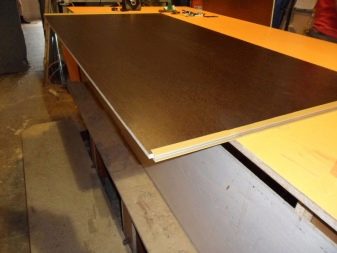
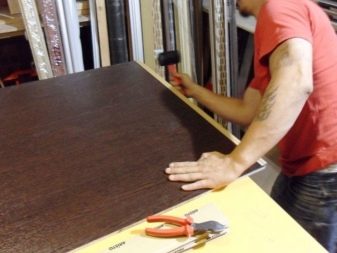
Tape is used to process the ends. On its inner surface there is a special compound that is activated when heated. It must be applied to the outer ends and ironed around the entire perimeter with an iron. Remains of glue are removed with sandpaper.
For the combined filling of the door leaf, you can use a combination of a variety of materials. In order to put together all the parts, you will need special profiles that can be purchased at any hardware store. In addition, handle profiles are needed.


The horizontal profiles for holding the inserts are cut according to the width of the blade, taking into account the width of the handle. Now you can start assembling the canvas from the inserts. If glass or a mirror is used as them, then it is necessary to purchase a silicone seal used to protect the ends. It is advisable to apply a special film on the inside of the mirror. If the mirror surface breaks, it will prevent the fragments from scattering in different directions.

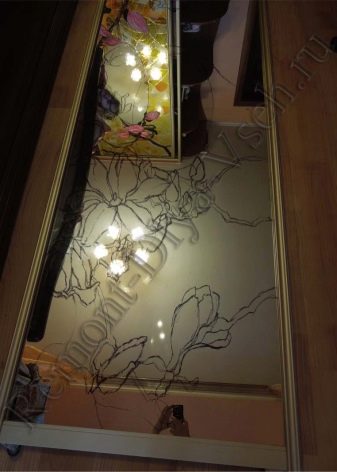
In order to attach the handle, you need to make holes in the upper and lower parts of the inserts. Two through holes are drilled in the upper one, and 4 holes in the lower one. The diameter of the holes located on the surface of the handle should be larger than the diameter of the holes located below them. In the upper part of the handle, the holes are drilled with an offset of 7 mm. In the bottom, the first pair is drilled with the same indent, and the second pair should be at least 42 mm from the edge.


Now you can start assembling the canvas. The prepared canvases are inserted into the profiles.To do this, we install the canvas with its end, apply a profile to it and, using a mallet, gently tapping, insert the canvas into the profile groove. We do the same with the rest of the profiles.
Before installing the door leaf between the rooms, you need to install a box, add-ons (if the box is already aperture) and prepare the platbands. It is better to install them after installing the door. The structure itself is mounted above the doorway with attachment to the wall.


In a plasterboard wall, the installation of the canvas is carried out on a metal frame, which must be installed at the stage of repair. First, the frame is installed, then the door is mounted, and only then is the plasterboard sheathing.
Despite the fact that the compartment door systems have some differences, the principle of operation and installation remain approximately the same. Therefore, the step-by-step installation instructions look almost the same for both the hinged system and the system with a bottom support.
To install the door leaf, you will need a wooden bar. Its length should be 4 times the width of the canvas. This is necessary for the free divergence of the doors in different directions.


Door installation begins with fixing a bar or a special profile. A rail prepared in advance in size is attached to the timber with the help of self-tapping screws. This prepared structure can be attached either to the wall, or to the ceiling, or to a metal frame. The mounting method depends on the installation location. When installing a door in a niche, the timber is attached to the ceiling, in the partition it is fixed to the frame, and the wall mounting method is suitable for interior doorways.
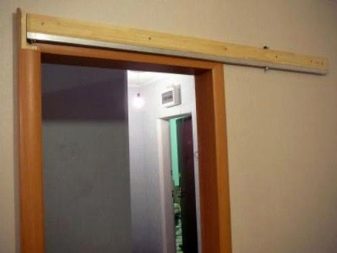
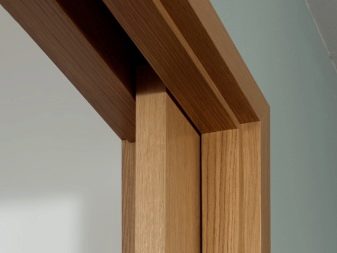
For proper fixing on the wall, the canvas is first placed in the opening and a mark is made, an indent up to 7 cm is made from it and a horizontal line is drawn. The prepared timber is screwed with screws to the wall strictly horizontally relative to the opening. You can check the position of the timber with the profile using a building level.
The prepared web with rollers is put into the rail. The ends of the profile are closed with rubber shock absorbers. In order for the door to move exactly along a precisely specified trajectory, a flag stopper is installed on the floor.
The open door movement system can be covered with a decorative panel.
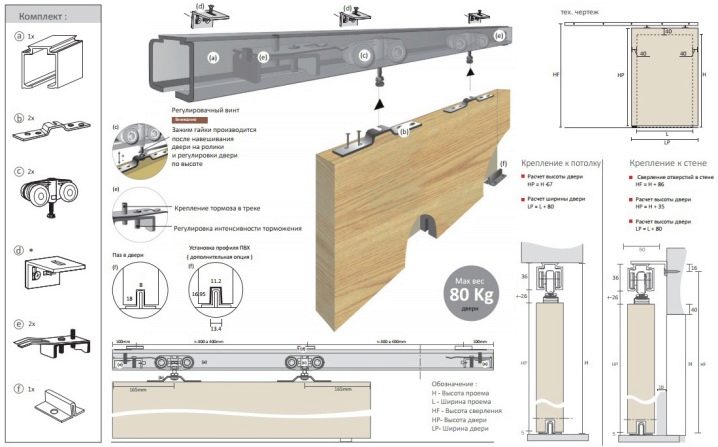
To install a sliding door with a lower support, in addition to the upper guide, a lower profile is installed. Stoppers in this case are located in the lower profile. To install the door, you first need to bring the upper part of the door leaf into the upper guide, and then, pressing the lower rollers, install the lower part of the door leaf on the rail.
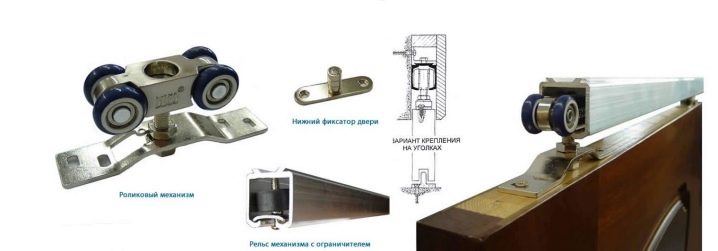
Components
Today there is a huge selection of accessories for installing a do-it-yourself wardrobe door.
To install a system with a lower support, it is necessary to purchase a set of guides and rollers corresponding to the weight and thickness of the sashes to be installed, handles, a pair of stoppers for each leaf, installed in the grooves of the lower guide, and, if desired, closers can be purchased.
For the suspension system, it is enough to choose the top guide, a pair of rollers installed at different ends of the canvas, a pair of flag stoppers and handles for the sash.
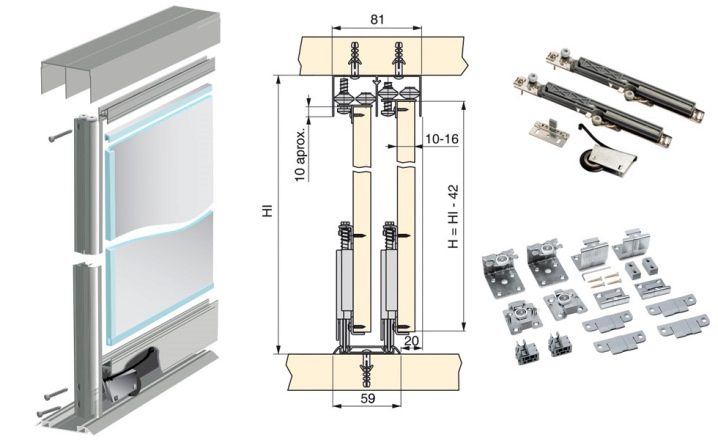
There are some differences between the parts for the suspension system and the support system. The upper rail of the suspension system, as a rule, is made in the shape of the letter "P" and not only contributes to the sliding of the canvas, but also supports it in weight. It has the main load.
As a rule, the material of manufacture is aluminum, but there are tube-shaped models made of steel. It is not customary to cover the upper track in the form of a pipe with a false panel; their shape and appearance are an additional decor for the room.
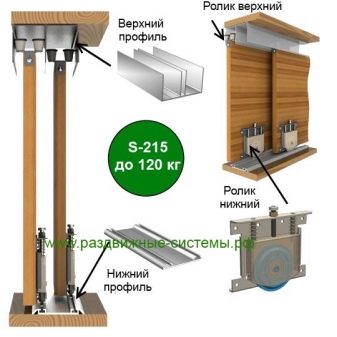
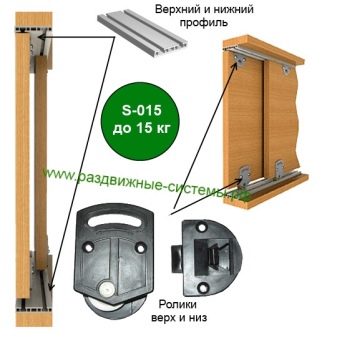
In the support system, the upper rail has the shape of a double “P” and does not bear the main load. Its function is to keep the sash upright.The main load in the support system falls on the lower rail. This profile has two parallel grooves for the movement of the rollers.
Each system has its own sets of rollers and stops.
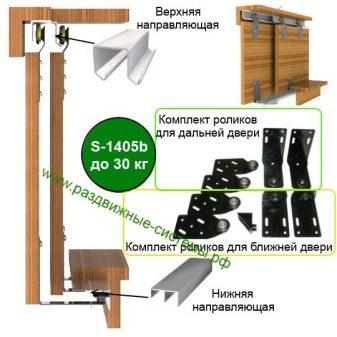

Successful examples in the interior
Sliding doors are a versatile solution for any room. With their help, you can turn any niche into a comfortable and very functional dressing room. Thanks to them, a large opening looks just great, with a swing door such an effect cannot be achieved. Not a single built-in wardrobe can do without them. Sliding doors help to beautifully and effectively separate one room from another.


For information on how to install compartment doors with your own hands, see the next video.













The comment was sent successfully.